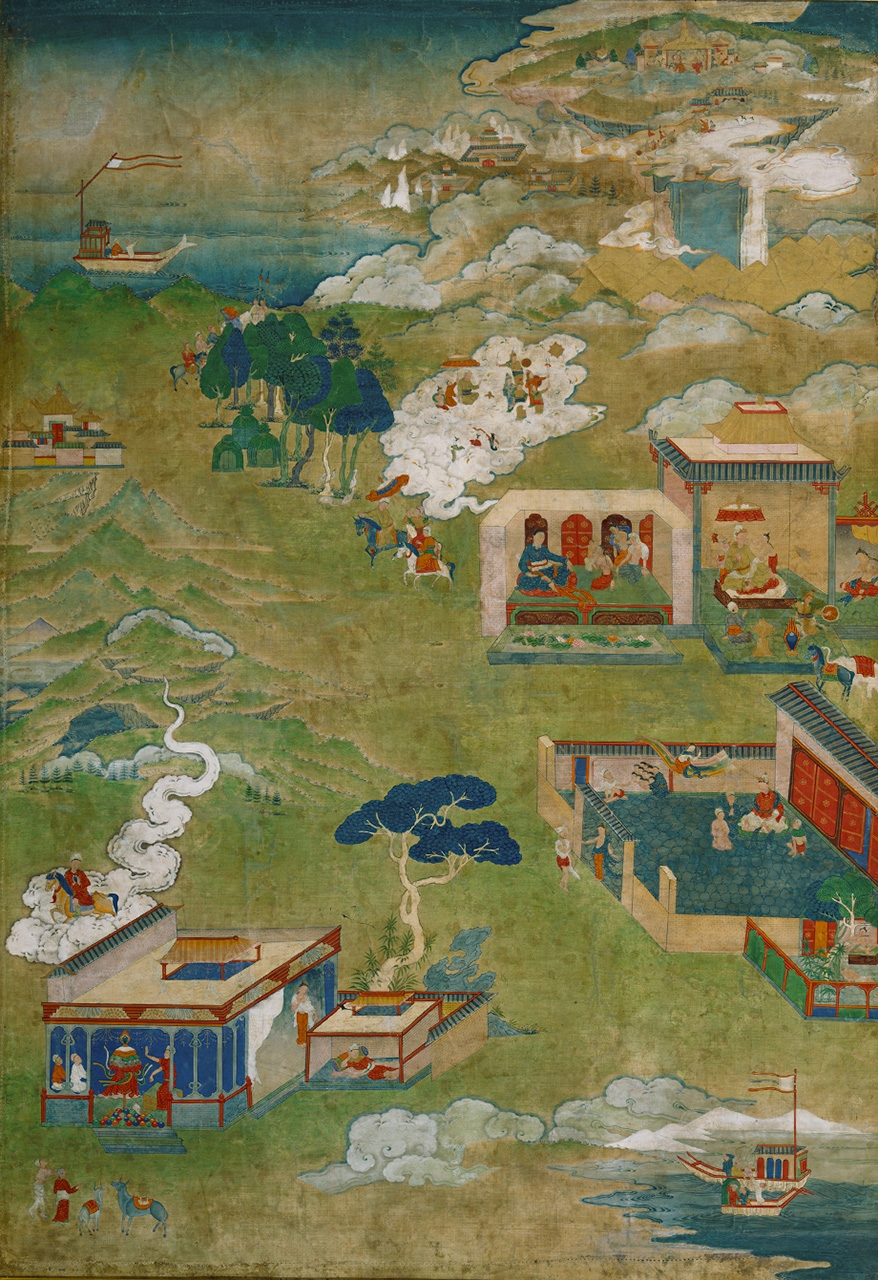
This work is based upon one of the most widely acclaimed painting sets commissioned by the great religious leader, patron, and artist Situ Panchen (1700-1774). It presents 3 of Kshemendra’s 108 Moral Tales (Bodhisattvavadanakalpata), a collection of stories that teach about the infallible laws of cause and effect (karma), merit, and the benefits of giving to and caring for others. Situ Panchen’s designs, carried out over twenty-three narrative paintings, are unusual in that the figures are quite small and they reside in open landscapes. Each scene is depicted in miniaturist detail, with every leaf and brick delineated, a clever visual strategy to draw the eye into each vignette. This painting from a nineteenth-century set follows the same design as the original.
In his dedicatory inscription for this set (dated 1736) Situ reveals his artistic intentions:
I have followed the Chinese masters in color, in mood expressed, and form, and I have depicted lands, dress, palaces, and so forth as [I have] actually seen in India. Even though all the discriminating skill of Menthang—[both] New and Old—and the Khyen [ris] tradition followers, Chiugangpa and the Encampment masters are present here, I have made [these paintings] different in a hundred thousand [particulars of] style.
29 5/8 x 20 1/2 in.
F1996.1.3, HAR426
- https://dev.rubinmuseum.org/images/content/796/f1996.1.3har426__zoom.jpg
- https://dev.rubinmuseum.org/images/content/796/f1996.1.3har426__zoom.jpg

